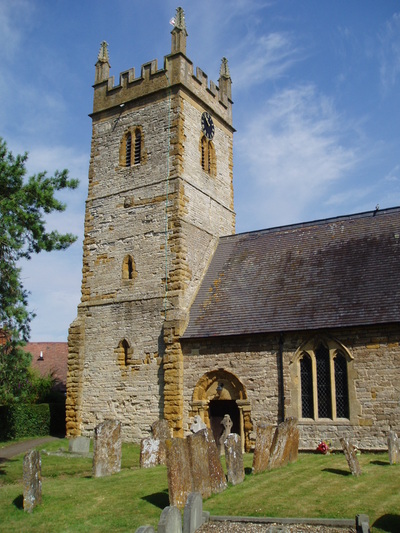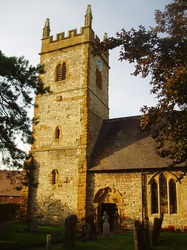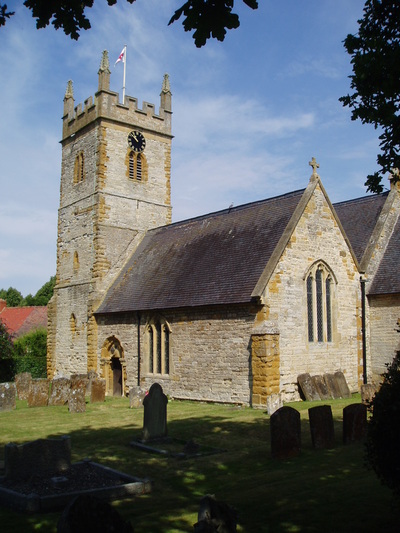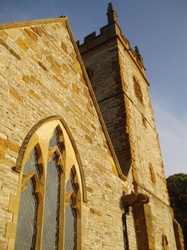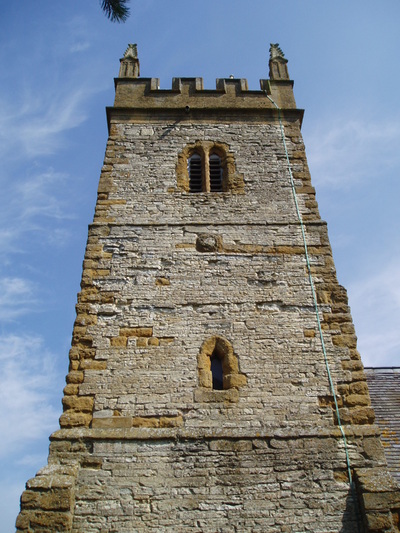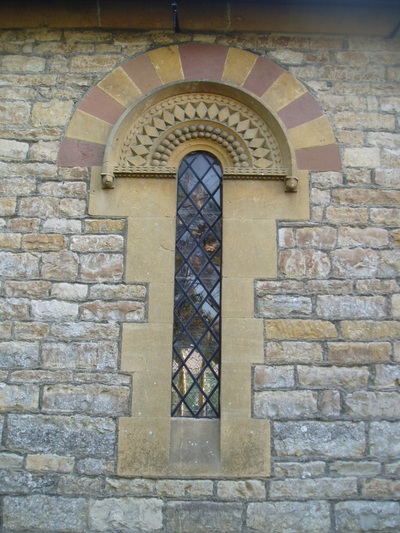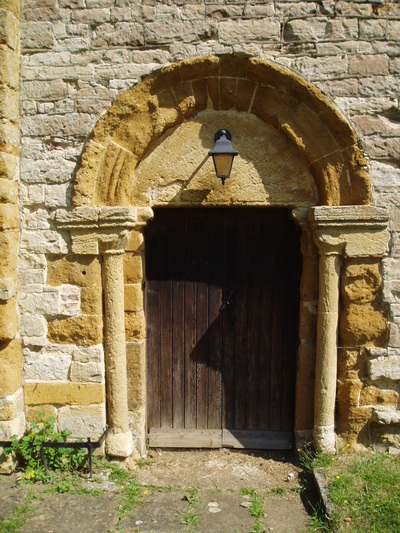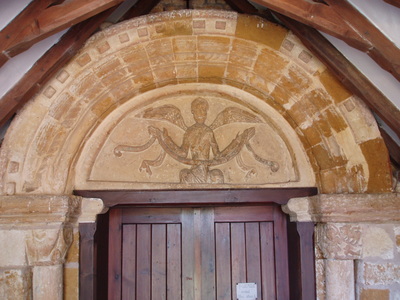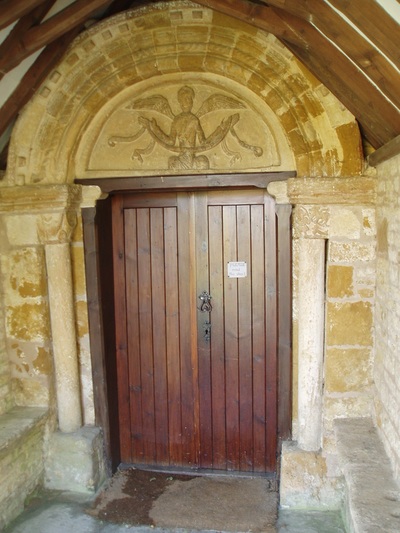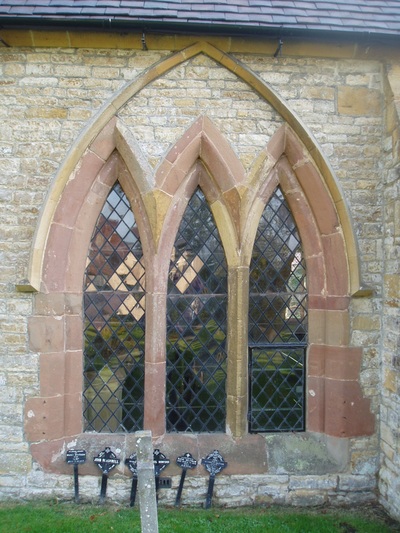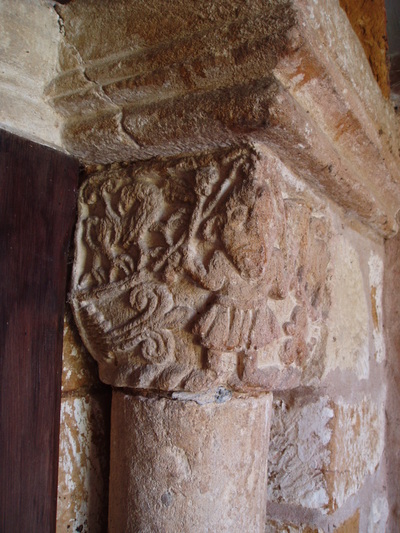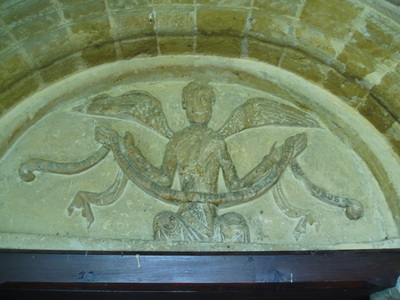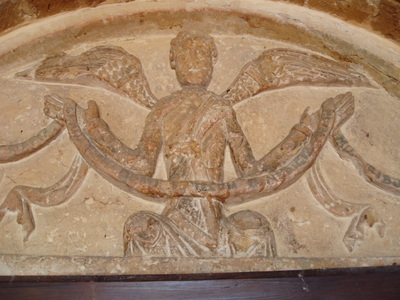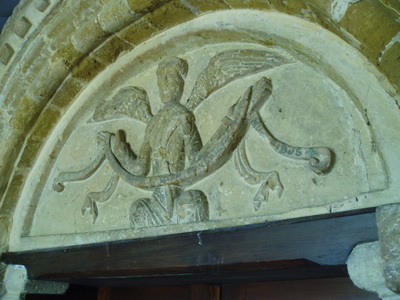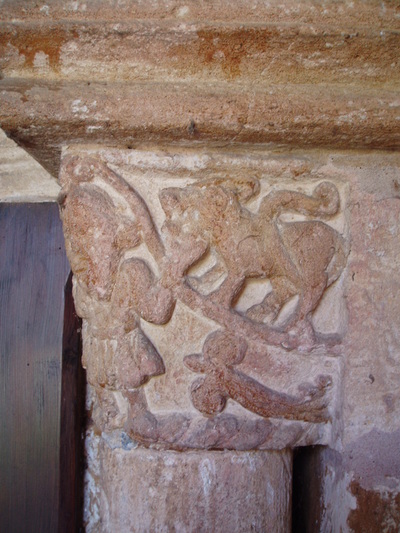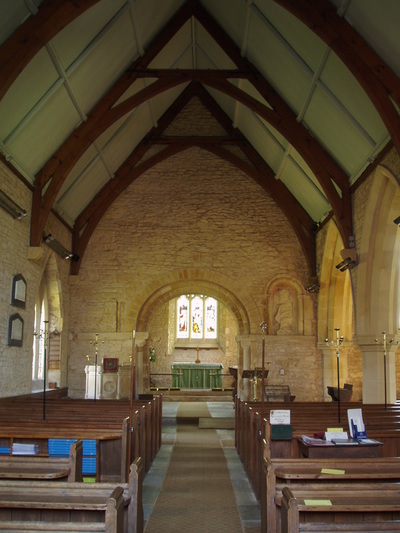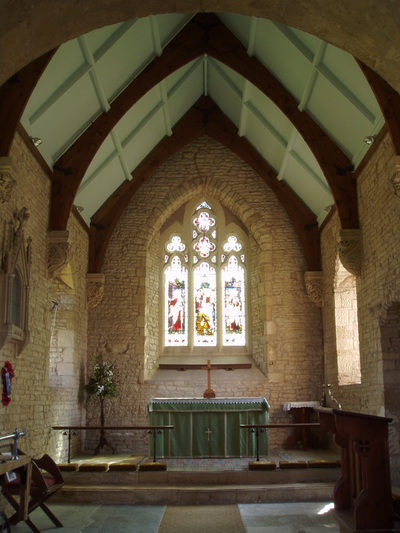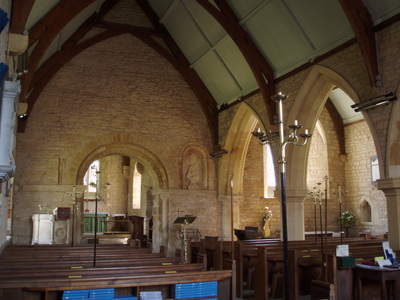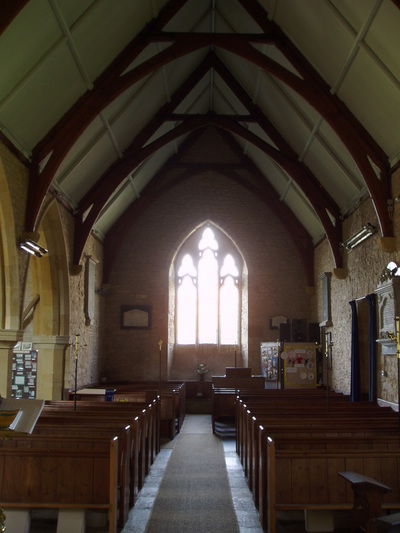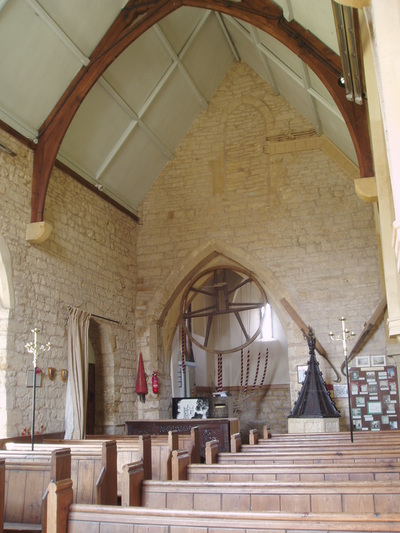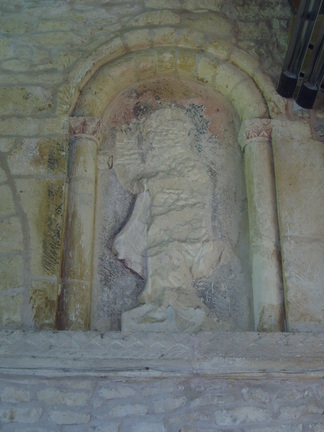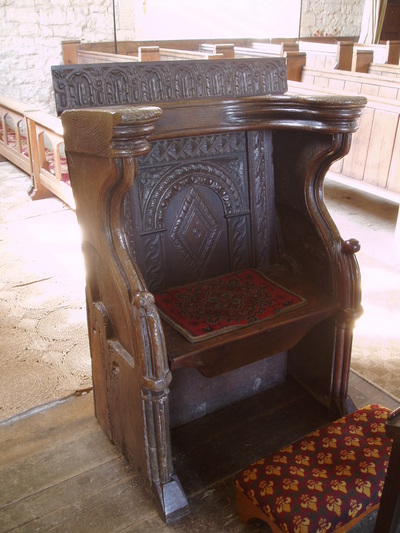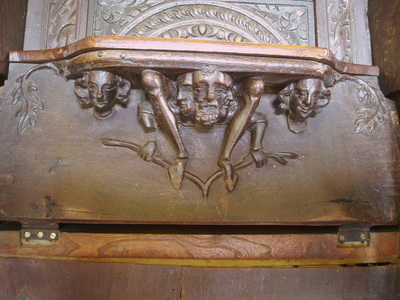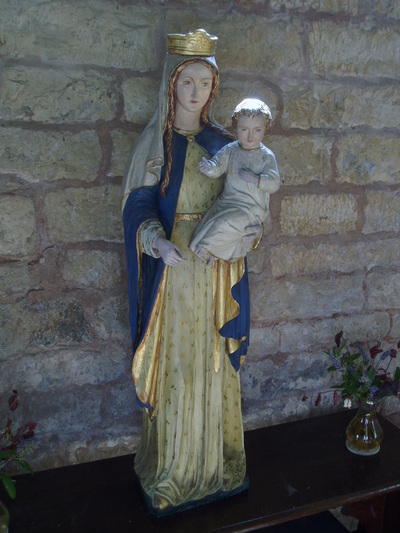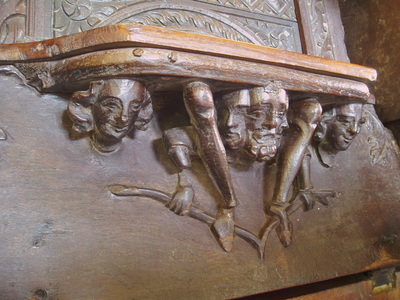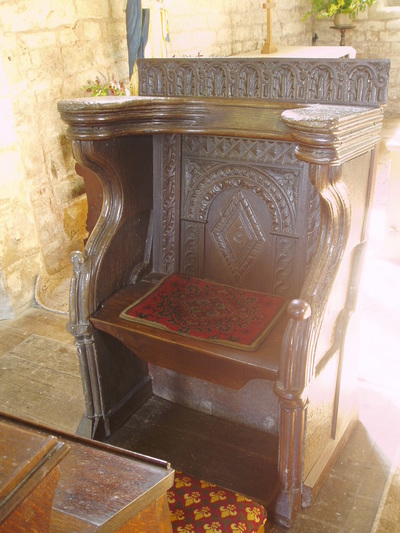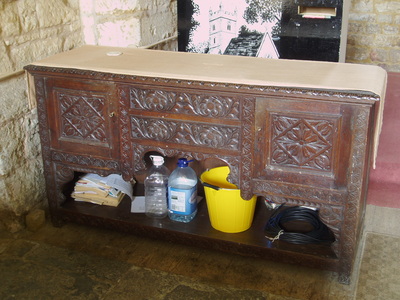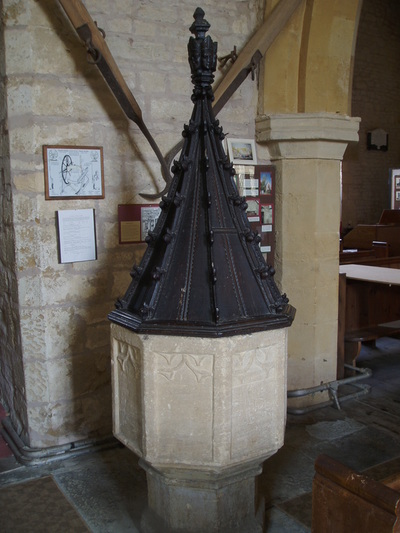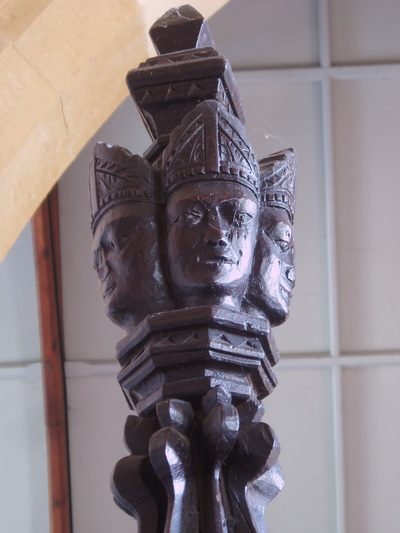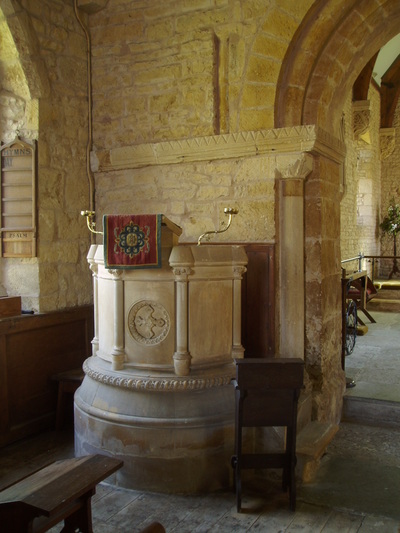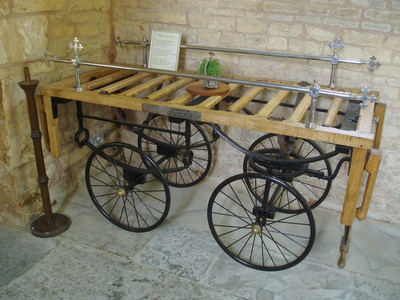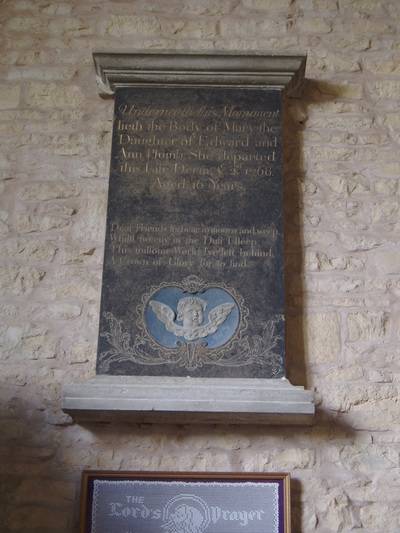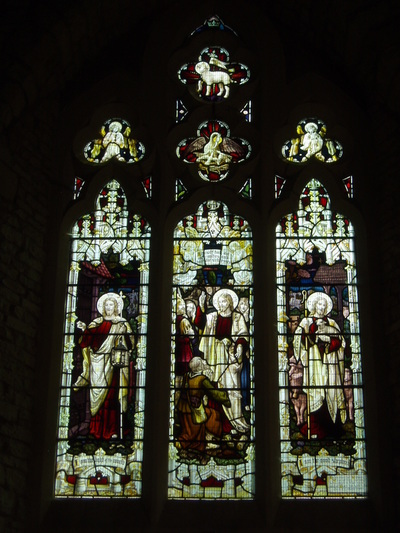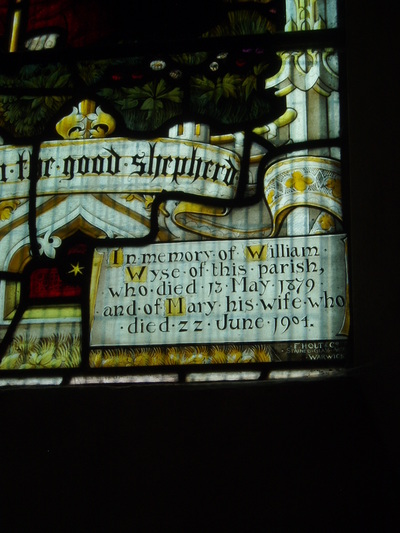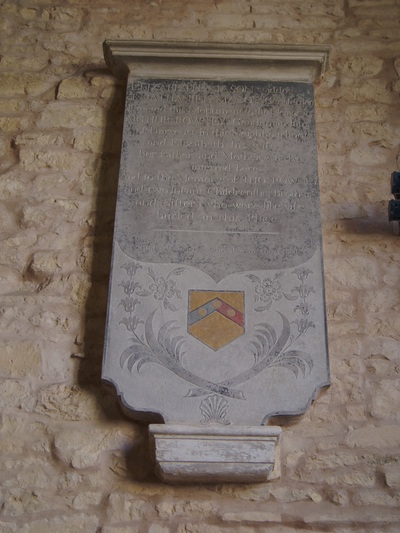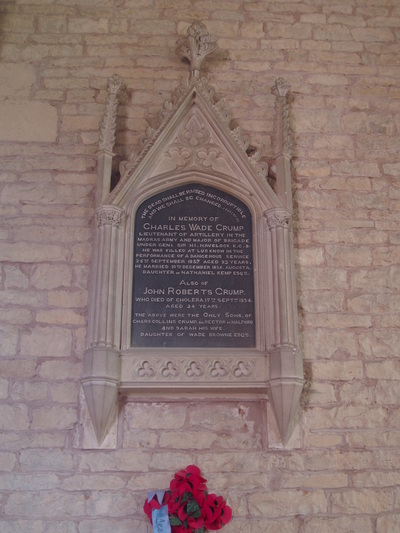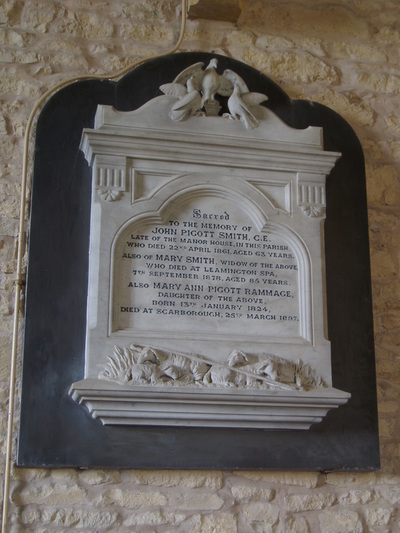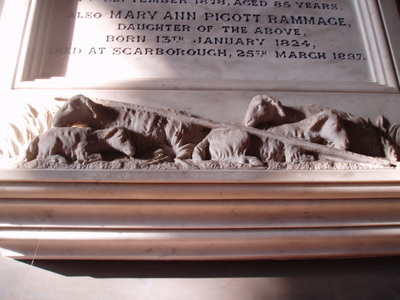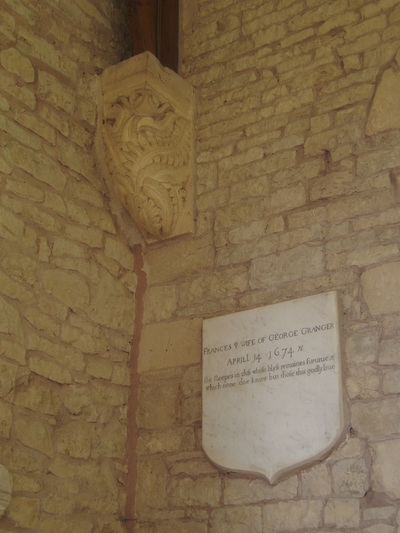Halford - St Mary
Halford is a picturesque spot that straddles the Roman Fosse Way, but its church is completely hidden from the many travellers along that ancient route, who will mainly remember the impressive Georgian Bell Inn as the villages' main landmark. St Mary's is reached through quiet narrow lanes , sitting in a leafy churchyard that seems a world away from the busy traffic nearby. It is well worth seeking out, despite its reclusiveness, for despite being a somewhat restored building it dates back to the 12th century and retains some charming Norman and medieval features to reward the visitor.
The church consists of nave and chancel with a south aisle, at the west end of which sits the 13th century pinnacled tower. Many of the windows around the church betray some thorough Victorian restoration (some of which are trying so hard to look Norman but couldn't be anything other than 19th century). Pevsner states that the church was 'fiercely restored in 1862' by the architects Poulter & Woodman, when the south aisle was largely rebuilt. Further work was done in 1883 when the chancel was given an equally thorough makeover.
The church consists of nave and chancel with a south aisle, at the west end of which sits the 13th century pinnacled tower. Many of the windows around the church betray some thorough Victorian restoration (some of which are trying so hard to look Norman but couldn't be anything other than 19th century). Pevsner states that the church was 'fiercely restored in 1862' by the architects Poulter & Woodman, when the south aisle was largely rebuilt. Further work was done in 1883 when the chancel was given an equally thorough makeover.
But all this restoration shouldn't discourage the visitor and instead one should make straight for the main entrance in the north porch, where a beautiful Norman tympanum awaits; this is an unusual design and considered the best surviving piece of Romanesque sculpture in Warwickshire, a simple but very effective at filling the arched space with an angel holding a ribbon-like inscription (enough of his waist is shown to suggest the angel is seated, despite being cropped at this point). The work has drawn comparison with Herefordshire School sculpture of the same date, believed to be c1130. The two capitals below are carved, that on the right portraying a man amidst scrolling foliage being pursued by a wild beast. There is a similar Norman doorway in the corresponding position on the south side, but any decorative carving that might have been here has long since eroded away.
|
At first sight the interior can appear somewhat bare, though it is fairly well lit and the exposed stone walls are a most attractive Cotswold colour. The timber roofs throughout are clearly Victorian and not trying to hide the fact, that in the chancel being borne by big foliate corbels which date from the 1883 restoration.
But the main feature that draws the eye is the focal point of the nave, the surprisingly small Norman chancel arch, itself unadorned except for some simple decoration on the capitals and cornice that supports it (much more decoration would have been applied with paint). More remarkable is the survival of a pair of niches flanking it, clearly of the same early 12th century date. That on the left has mostly disappeared in later masonry beyond one colonnette, but the right hand niche is intact and even preserves something of the sculpture it was designed to frame, a figure in relief that has alas been mostly hacked away, but enough of it's outline and a few patches of drapery remain (along with traces of colour) to indicate what an impressive piece it must have been. I can think of no parallel to this arrangement in any other English Romanesque church, but it has been considered the two figures may have been Mary & St John flanking the Crucifixion, and certainly the large expanse of plain wall above the chancel arch must once have formed a backdrop to the rood itself and probably a Last Judgement mural (all long since vanished without trace). |
Furnishings
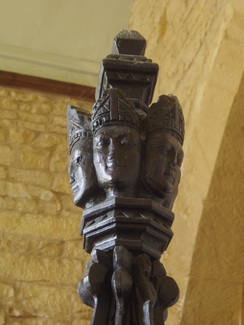
The church possesses a couple of good pieces of medieval woodwork, the earliest of which is the single early 14th century carved misericord set in a single stall at the east end of the nave. The carving appaers to depict a kind of acrobatic figure, in a strange squatting position with just his arms and legs visble beneath his head; more remarkable still is his head which bears three faces (and extra clean-shaven one protruding either side of his primary bearded one). Two further youthful heads appear either side, flanking this bizarre figure. The stall itself is also medieval, and appears to have been part of a larger set (cuttings for adjoining misericords can be seen on the outer flanks), but has been partially made up with recycled Jacobean carved paneling (which presumably must have come from the pulpit that preceeded the present Victorian one of stone).
At the west end of the south aisle, next to the base of the tower, is the late medieval font; the octagonal bowl is quite sturdy, simply adorned with cusped rectangular panels sunk into each side. More interesting is the wooden cover, an attractive piece which takes the form of a low-pitched spire and is adorned with crockets and an intriguing finial at its apex, with fave mitred bishops' heads staring out in every direction like some Khmer creation from the Angkor temples of Cambodia! It is a rare piece of late medieval carving, almost as strange as the misericord carving from at least a century earlier.
In the chancel is a funerary bier of much more recent date.
At the west end of the south aisle, next to the base of the tower, is the late medieval font; the octagonal bowl is quite sturdy, simply adorned with cusped rectangular panels sunk into each side. More interesting is the wooden cover, an attractive piece which takes the form of a low-pitched spire and is adorned with crockets and an intriguing finial at its apex, with fave mitred bishops' heads staring out in every direction like some Khmer creation from the Angkor temples of Cambodia! It is a rare piece of late medieval carving, almost as strange as the misericord carving from at least a century earlier.
In the chancel is a funerary bier of much more recent date.
Stained Glass & Memorials
The east window contains the only stained glass in the church (which at least keeps the interior relatively light) which is the work of Frank Holt's Studio in Warwick and dates from 1904.The three lights depict Christ in different roles, in the centre shown healing the sick, whilst on the left He carries a lantern as the' Light of the World' (for once not based directly on Holman Hunt's painting!) balanced by the Good Shepherd to the right. The colouring is rather muted and very much of its date.
There are a few memorial tablets mounted on the walls about the church from the late 17th century onwards. The most attractive are the Mary Plumb memorial of 1768 with a low relief cherub, and the Pigott Smith memorial of 1861, which is adorned with small white marble sheep and birds below and above.
There are a few memorial tablets mounted on the walls about the church from the late 17th century onwards. The most attractive are the Mary Plumb memorial of 1768 with a low relief cherub, and the Pigott Smith memorial of 1861, which is adorned with small white marble sheep and birds below and above.
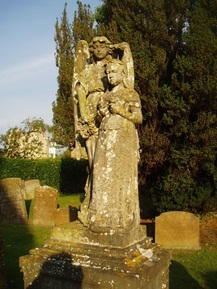
One last memorial that should be noted is to be found outside in the graveyard; whoever the person commemorated is the sculpture that surmounts the grave looks exactly like Queen Victoria herself, minus crown being accompanied by an angel. Was this an individual who wished to express a strong royalist sentiment or did they just happen to be Victoria's doppelganger?! Someone in Halford must be better informed than I am on this subject (and many more no doubt!).
Halford church is worth seeking out for its small but exceptional Norman features, and has retained much of antiquity despite a rather intense Victorian makeover, the Norman carvings worth the trip alone, the medieval woodwork an added bonus.
The church is normally open and welcoming to visitors during daylight hours.
Aidan McRae Thomson 2015
Halford church is worth seeking out for its small but exceptional Norman features, and has retained much of antiquity despite a rather intense Victorian makeover, the Norman carvings worth the trip alone, the medieval woodwork an added bonus.
The church is normally open and welcoming to visitors during daylight hours.
Aidan McRae Thomson 2015

